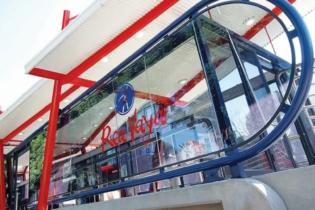About 15 years ago there were no commercially viable IT packages on the market and some of the larger companies who had the resources actually started developing IT packages in-house. At the time, they had no other option. By Yolandi Booyens, Dovetail/Fleetwatch
The time has come where the decision must now be made whether to retain or outsource the IT function. At the outset let it be said that we believe that for a company to retain ownership of the IT function is an almost irresponsible decision in terms of cost, time and expertise required getting the job done. For a company to start writing its own software is sheer lunacy. Understandably, moving a critical function, such as IT, out is not easy. Quite often vested interests and corporate politics come into play. People are scared of losing control of the business while others fear for their jobs. The wider transport industry has a similar problem with in-house workshops. The modern trend is to outsource all maintenance functions. The absolute financial and other resources required in running a workshop on a viable footing for a major fleet can become a huge burden for any company to maintain. The same is true of the IT function. In fact, apart from having direct control over the system and the operating staff, there is little advantage in trying to manage and maintain an in-house IT system.Why is this? IT systems take a long time to write, develop and then ‘settle in.’ Two to five years is not a long time for this to happen. During this period expect to spend at least R2-million in development costs. This is before running and maintenance costs. Still want to do it yourself?
Then there is the IT staff. Apart from being very expensive, most top IT people are found in top IT companies. It is very difficult for a non-IT-focused company to attract and retain these staff. Those you do find are likely leave for better career and financial opportunities as they arise. This is probably the biggest problem for companies trying to manage an in-house IT programme. It is important to remember that because you are not an IT-focused company your IT staff are not integral to the business. Hence they are not ‘driven’ and tend to lose impetus and seek to fulfil their needs elsewhere. There is also a misconception that because in-house systems are exclusive they are better and provide a better advantage. This is simply not true, in fact there a very real danger of becoming ‘blinkered.’ Because your IT system is focused on your sole needs you stand to get left behind in the upgrade and development race. A cardinal sin in today’s technologically fast-paced business environment. Taking cognisance of the above. Could it be true to say that ‘mad dogs and Englishmen go out in the midday sun and write their own IT packages?’ Jokes aside, let us take a look at just a few of the advantages of outsourcing. Naturally this assumes you have picked the right supplier.- There are no development costs – the expensive R&D part of the work has been carried out and paid for by the supplier.
- You do not have to train, manage or pay for IT staff – leave this to the IT supplier.
- Outsourcing means you have instant access to product enhancements and upgrades. You also get professional backup and support as part of the purchasing package. This includes everything from hardware selection to software implementation.
- Productivity improvements take months instead of years – even better, there is no downtime during installation.
- Although it is not always easy – you can change your IT supplier.
- Over 80% of Fortune 500 companies outsource their IT requirements – they must be doing something right.








